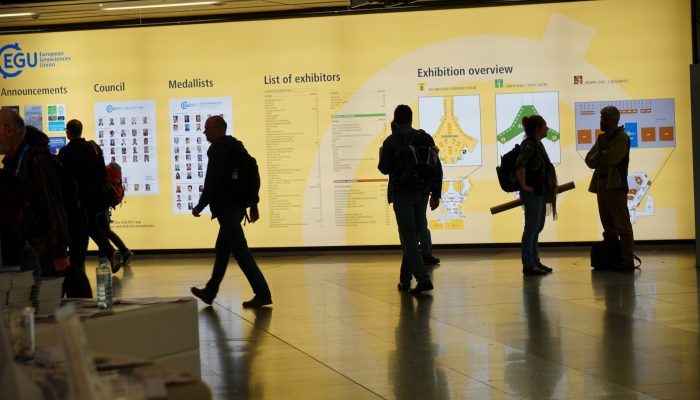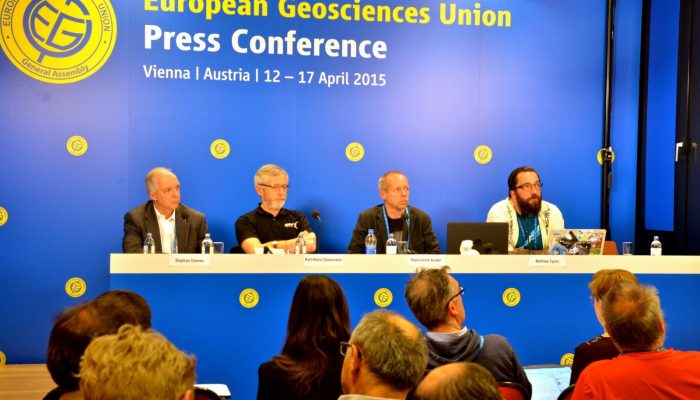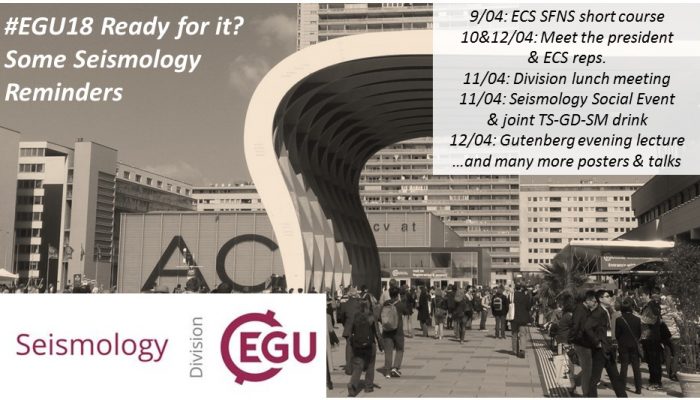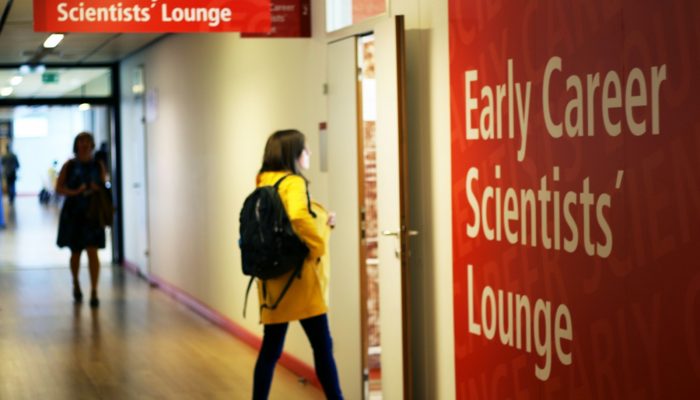We’re halfway through the General Assembly already! Once again there is lots on offer at EGU 2018 and this is just a taster – be sure to complement this information with EGU Today, the daily newsletter of the General Assembly, available both in paper and for download here. Union-wide Sessions Today’s Union-wide session reflects on fifty years of international ocean drilling (US4: 08:30–12:00 ...[Read More]
If you didn't find what you was looking for try searching again.
GeoLog
At the Assembly 2018: Tuesday Highlights
Welcome back to the second day of the 2018 General Assembly! Today is packed full of excellent sessions, and this list of highlights is by no means comprehensive! Make sure you complement this information with EGU Today, the General Assembly newsletter, to get the most out of the conference – grab a copy on your way in or download it here. Union-wide Events Today’s Union-wide session highlig ...[Read More]
GeoLog
The Assembly documented through art!
For the first time, the General Assembly will be documented by EGU’s very own artists in residence! Sam Illingworth, Science Communication Lecturer at Manchester Metropolitan University (UK), and Matthew Partridge, Senior Research Fellow at Southampton University (UK), have been busy this week producing poems and cartoons to share their conference experiences and communicate science. Why not ...[Read More]
GeoLog
Photo Competition finalists 2018 – who will you vote for?
The selection committee received over 600 photos for this year’s EGU Photo Competition, covering fields across the geosciences. The fantastic finalist photos are below and they are being exhibited in Hall X2 (basement, Brown Level) of the Austria Center Vienna – see for yourself! Do you have a favourite? Vote for it! There is a voting terminal (also in Hall X2), just next to the exhibit. The resul ...[Read More]
GeoLog
At the Assembly 2018: Monday highlights
Welcome to the 2018 General Assembly! This is the first full day of sessions and there’s a feast of them to choose from. Every day we’ll be sharing some super sessions and events at EGU 2018 here on GeoLog and you can complement this information with EGU Today, the daily newsletter of the General Assembly. Union-wide Events Of particular importance today is the Union’s Plenary Meeting (PCN2) at 12 ...[Read More]
Geomorphology
ECS Events @EGU2018
Finally, the EGU general assembly is starting today. In order to give you some guidance what important events you should definitely not be missing out on, the ECS representatives (Micha Dietze and Annegret Larsen) put together this very nice timetable:
Cryospheric Sciences
Image of the Week – Edible cryosphere at EGU 2018!
It is time again for the annual family meeting of the European Geosciences Union! A lot of interesting talks, posters and events are waiting for you! But this also means you will have to use your brain a lot to concentrate and understand what is going on… Every year, around 15,000 geoscientists meet in Vienna for the EGU General Assembly (see our guide to navigating EGU 2018). It is an exciting ev ...[Read More]
GeoLog
EGU 2018: Follow the conference action live!
Earlier this month we shared a post on how you can keep up to date with all the science being presented at the General Assembly via our social media channels. This week we share with you how you can tune into the conference action, live! Many of the EGU General Assembly highlights will be streamed live, so if you can’t make it to Vienna this year, you can still watch sessions like the Union Sympos ...[Read More]
Seismology
Some Seismology reminders for EGU2018 General Assembly
With only 2 days left for the kick off of the annual European Geosciences Union General Assembly (2018), here is a quick-list to go through in time for EGU. First, read this page for information concerning activities for Early Career Scientists at the GA: https://www.egu.eu/young-scientists/at-the-assembly/ EGU2018 mobile app The EGU2018 mobile app is now available. Go to http://app.egu2018.eu to ...[Read More]
GeoLog
What’s on for early career scientists at the Assembly in 2018
This year, there’s a great line-up of early career scientist (ECS) sessions at the General Assembly. Not only that, but there are opportunities to meet those that represent you in the Union, get to know other ECS in your field, and make the most of both the scientific and social sides of the conference… Networking First up for ECS is the icebreaker event during the opening reception on the Sunday ...[Read More]








